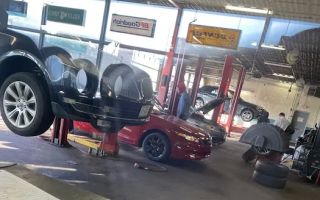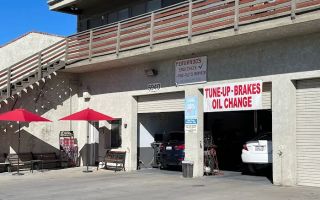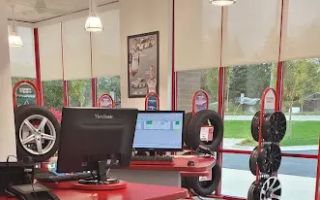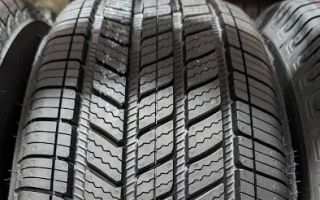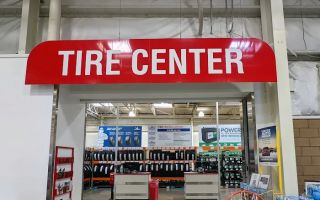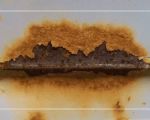Staying in Control During a Tire Blowout: My Firsthand Experience and What You Should Know
1. The Day My Tire Blew on the Highway
I’ll never forget the sound—it was like a shotgun blast. I was driving on the I-95 at about 70 mph when my rear tire blew out. The car jerked violently to the side. My heart skipped a beat. There was a semi-truck just a few lanes over. In that moment, instinct and everything I’d read about tire blowouts kicked in.
Luckily, I stayed calm, kept my hands firm on the wheel, and didn’t slam the brakes. That split-second decision saved me from what could’ve been a devastating accident. Let me walk you through everything I’ve learned since that day, and what you should do if you ever find yourself in the same situation.
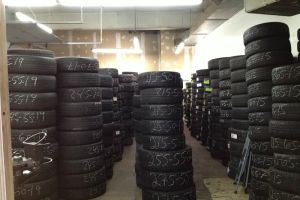
MR. TIRE INC.
2078 New York Ave, Huntington Station, NY 11746, USA
2. What Happens During a Tire Blowout?
A tire blowout occurs when the tire suddenly loses all air pressure, often due to overinflation, underinflation, wear and tear, or hitting debris. The result is an immediate and violent rupture that causes the vehicle to veer sharply. It’s more common in hotter months when roads are steaming and tires expand from heat.
For rear-tire blowouts, your vehicle may fishtail. If it’s a front-tire blowout, expect the steering wheel to yank strongly in one direction. Both situations require quick thinking and composure.

MR. TIRE INC.
2078 New York Ave, Huntington Station, NY 11746, USA
3. What You Should Do When a Tire Blows Out
3.1 Stay Calm and Don’t Slam the Brakes
Your first reaction might be to slam on the brakes—but resist that urge. Braking hard can cause your vehicle to spin or flip. Instead, maintain a firm grip on the steering wheel and gradually ease your foot off the accelerator.
3.2 Control the Steering Wheel
Steer straight and keep your vehicle moving in its lane. Even if the car pulls to one side, fight the urge to overcorrect. Small, controlled steering adjustments will keep the vehicle steady.
3.3 Let the Vehicle Slow Down Naturally
Once you’ve stabilized the vehicle, let it slow down naturally. Turn on your hazard lights to alert other drivers. When your speed drops to about 20 mph or lower, carefully steer toward the shoulder or a safe zone away from traffic.
3.4 Stop the Car and Assess the Damage
Once you’ve stopped, set the parking brake and exit the vehicle only if it’s safe. Use reflective triangles or road flares if available. Inspect the blown tire, and if you have a spare and tools, you can attempt to change it. If not, this is where calling roadside assistance comes in.
4. Common Causes of Tire Blowouts
- Underinflated or overinflated tires
- Old or worn-out tires with visible cracks or bald spots
- Overloaded vehicles
- High-speed impacts with potholes or debris
- Driving in hot temperatures for long periods
Before that day on I-95, I didn’t think much about tire pressure. I now check it monthly, especially before long drives. Prevention is always better than reaction when it comes to vehicle safety.
5. How to Prevent a Tire Blowout
5.1 Regularly Check Tire Pressure
Use a reliable tire pressure gauge and check all four tires (plus the spare) every few weeks. Your car’s manual or the label inside the driver’s side door will show the recommended PSI.
5.2 Inspect Tires for Damage
Look for uneven tread wear, visible wires, bulges, or cracks. These signs often mean your tire is ready to fail and needs replacement.
5.3 Don’t Overload Your Vehicle
Carrying more than your vehicle’s weight limit stresses your tires. Check the Gross Vehicle Weight Rating (GVWR) to ensure you're not overdoing it.
5.4 Rotate Tires and Get Wheel Alignments
Rotating your tires every 5,000 to 8,000 miles helps even out wear. Regular alignments ensure that your tires don’t wear unevenly, which can lead to weakened spots.
6. What to Keep in Your Car for Tire Emergencies
- Spare tire (properly inflated)
- Car jack and lug wrench
- Tire inflator or sealant
- Flashlight with extra batteries
- Reflective triangles and high-visibility vest
- Emergency contact list and roadside assistance number
7. When to Call for Professional Help
If you’re in a dangerous location, at night, or if the damage looks too severe to handle on your own, always call for professional roadside help. That day, I called for assistance after realizing the rim was bent. I waited safely inside my locked car, flashers on, until help arrived.
Services like Rescue & Towing can connect you to the nearest and most reliable towing companies. When time matters, don’t risk it—let the professionals handle the heavy lifting.
8. Real Stories from Other Drivers
After sharing my story online, I heard from dozens of drivers who went through similar experiences. A mother in Arizona described how a front tire burst while she was driving with her toddler. Another man recounted his blowout on a mountain road and how his emergency kit saved the day. These stories reminded me that preparedness is universal—it saves lives.
9. Why Staying Calm is Your Superpower
The real key in a tire blowout isn’t just your technical response—it’s your ability to stay calm. It’s knowing your vehicle, having practiced the steps in your mind, and keeping a clear head when chaos hits. Like any emergency, the more prepared you are, the better you’ll respond.
If you drive often, especially on highways, I encourage you to go through these steps with your family members or driving-aged kids. The few minutes it takes to learn can make a huge difference.
10. Don't Wait Until It's Too Late
My tire blowout didn’t lead to an accident because I was lucky and a bit informed. I’ve made it my goal since then to help others prepare better. Don’t wait until your tire explodes on a busy freeway to think about what you should do.
Be proactive. Learn the signs. Prepare your car. And when in doubt, trust a professional. Visit Rescue & Towing to get connected with a trusted towing service before the unexpected happens.



